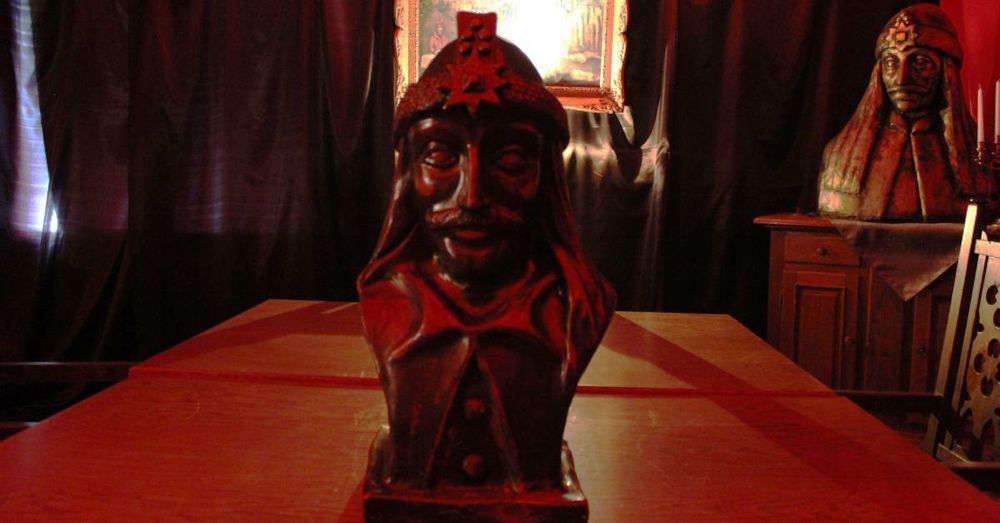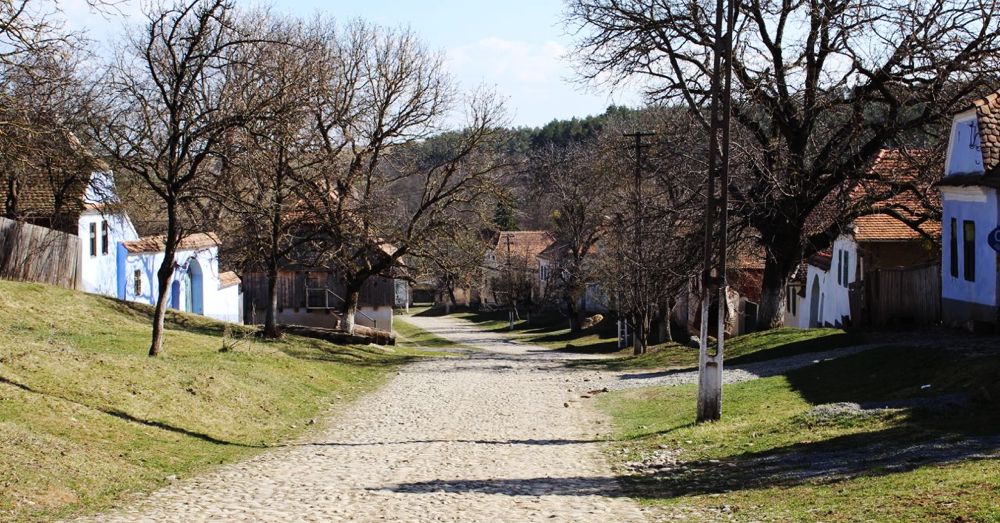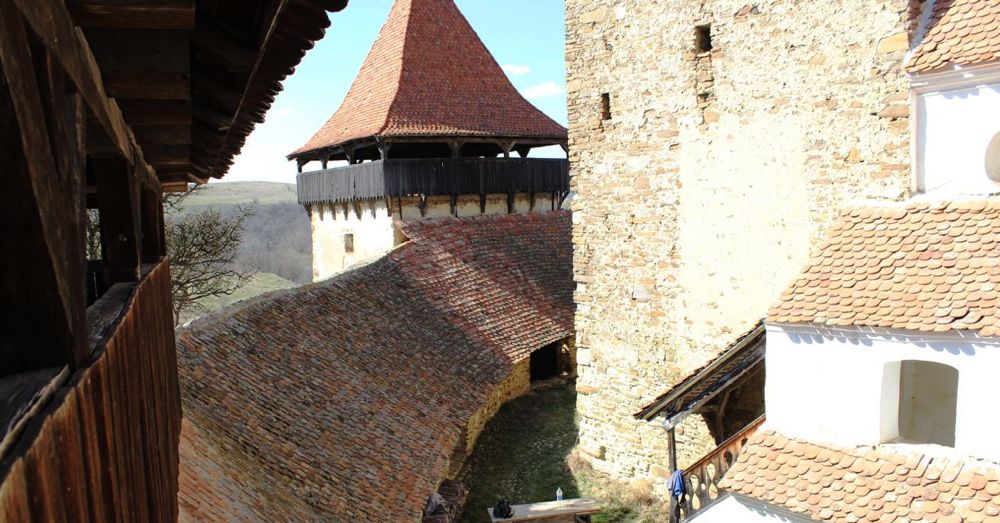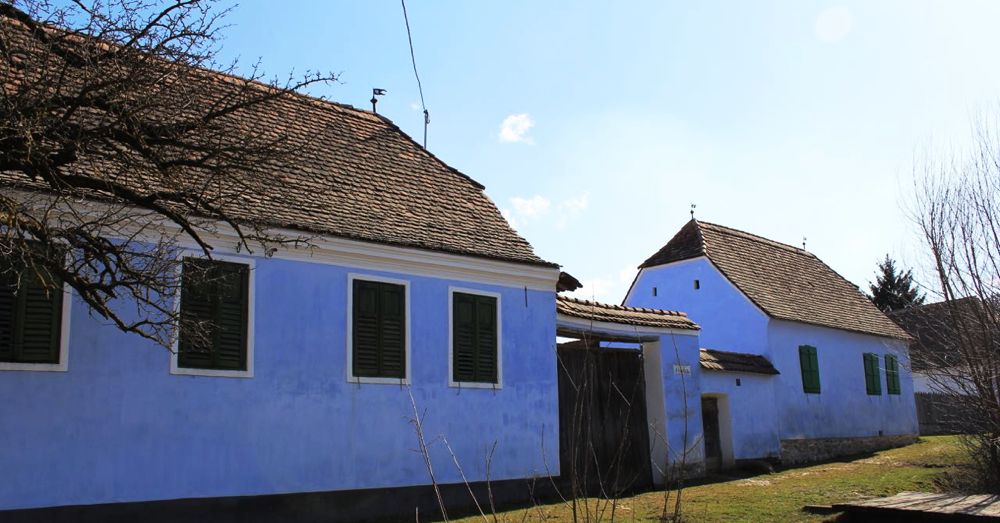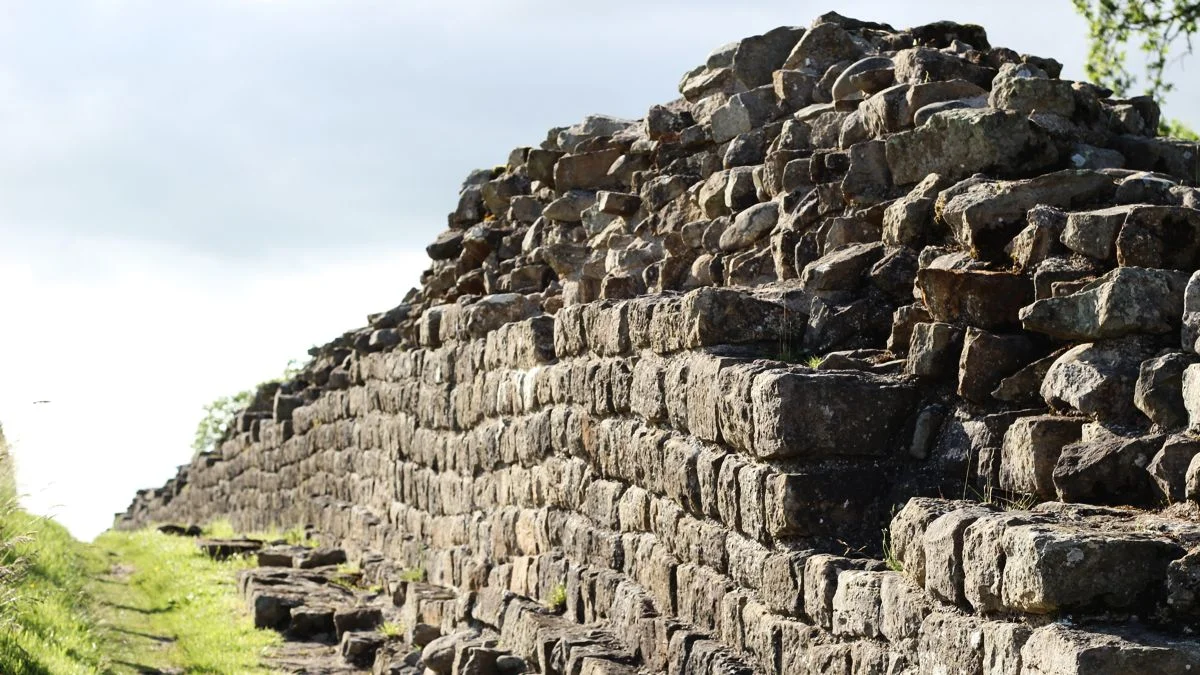Thursday, 26-03-2015. Day 218.
Villages, Churches, Princes.
We enjoyed our tour with the Land of Dracula Tours so much, that we signed up for another one, this time to visit the Saxon villages of Sighisoara and Viscri, both of which are UNESCO World Heritage sites.
We took a day off on Wednesday from doing pretty much anything notable. Sometimes when traveling the world, we've found we need a day or so to recharge. But Thursday we were back at it and ready for Manuela (our guide who'd taken us to Bran Castle two days prior) when she again met us at our hotel and we all took off on the 90-minute drive to Sighisoara, northwest of Brasov.
SigHisoara
Like many medieval towns, Sighisoara (pronounced sigi-shwera) is a fortified village, meaning it was built up around a stone wall — a wall that is still mostly intact today.
Founded in the 12th century, Sighisoara is a notable for a few reasons. First of all, it's a UNESCO World Heritage site for being the oldest medieval village that's still inhabited by people. It was an early center for artisans and was a center of trade between central Europe and the Byzantine influenced regions of southeastern Europe.
It's also notable as being the birthplace of Vlad III Dracula, so it has a tiny bit more to do with the legend of Count Dracula than the previously visited Bran Castle. The place where Vlad was born, a bright yellow building just off the center of town, is marked by a marble plaque mounted on its exterior wall.
For 5 Romanian lei ($1.25) you can venture up the steps and into the room where Vlad was born. We did this, and it was about as cheesy as it could be, complete with an over-the-top live reenactment of Dracula rising from a coffin. I knew it was going to be pretty much a tourist trap, but I admit I was hoping for a bit more history and a lot less theatrics.
We wandered about the town for a few hours and found it to be quite charming. Just down the street from where Vlad was born the Clock Tower stands tall above the surrounding buildings. It chimes every 15 minutes and its roof is covered in what's called “dragon-scale tiles,” which are sparkle with rainbow colors in the sunlight.
Along with the fortified wall, a number of the town's original towers still stand (I can't remember how many exactly, but five comes to mind), and testament to the town's artisan roots, these towers have names like Tinsmith's Tower and Cobbler's Tower.
Sighisoara was a fun little town to visit, and even if you're not into the whole Vlad Dracula scene, it's still worth at least a day trip from Brasov.
Our next stop was Viscri, a small village that is still largely self-sustaining. It's a fair distance from the main highway between Sighisoara and Brasov, down a narrow, often single-lane stretch of road that's not the smoothest of surfaces. As we bounced down this road to Viscri, pulling over every so often to let a horse-drawn carriage go by, we passed through a few different gypsy villages.
The gypsy villages were sort of sad. The houses were all small shacks, and nearly all of them looked to be on the verge of falling down. None of them seemed to have any glass in the windows, just a towel or sheet hung over the opening (if anything). But every house had a satellite television dish.
Viscri
Viscri is another small Romanian town that is notable for a few reasons. First of all, it's one of the villages that comprise the UNESCO World Heritage Site named Fortified Churches in Romania. Unlike Sighisoara where the whole village was surrounded by a defensible wall, smaller villages like Viscri retreated inside the fortified church and locked themselves behind the safety of its walls.
The fortified church in Viscri, which is still in use today, is known as the White Church. From the outside, it looks very much like the fortress we visited at Rasnov. Inside, the chapel is at the same time both spartan and ornate.
At the rear of the church proper, there's a set of steps hewn into the rock walls that lead up to the bell tower above. We climbed through the narrow, winding steps to the top of the tower, which gave us a great view of the land surrounding Viscri. For the most part, the land outside the borders of the town was rolling hills and farmland as far as we could see.
We climbed back down the steps and explored the small museum at the White Church and then the inner courtyard, which felt very old and very much like a fortified castle, before we left on a casual stroll through the very quiet town (aside from the gents hammering on the roof of the White Church). We were there on a Thursday at maybe 3:00 in the afternoon, and very few people were around.
Viscri is also notable as being the town where Prince Charles (you know, that bloke from England) vacations every summer. He even owns a house along the village's main street. On our way back to the car, we walked by his place and stopped by to say hello, but he wasn't around. Maybe we'll catch up with him in London.
After we struck out at Prince Charles's place, we got back into the tour van and bounced our way back down the road and back to Brasov where we had a dinner of kebabs from Azima (which is sort of a Chipotle but for, you know, kebabs).
Notable Statistics ...
UNESCO World Heritage Sites visited: 2 (29 cumulative)
Swan nests seen: 1
Hours in a van: 4
Gypsy carpets seen being cleaned in the road: 1

Tom Fassbender is a writer of things with a strong adventurous streak. He also drinks coffee.






